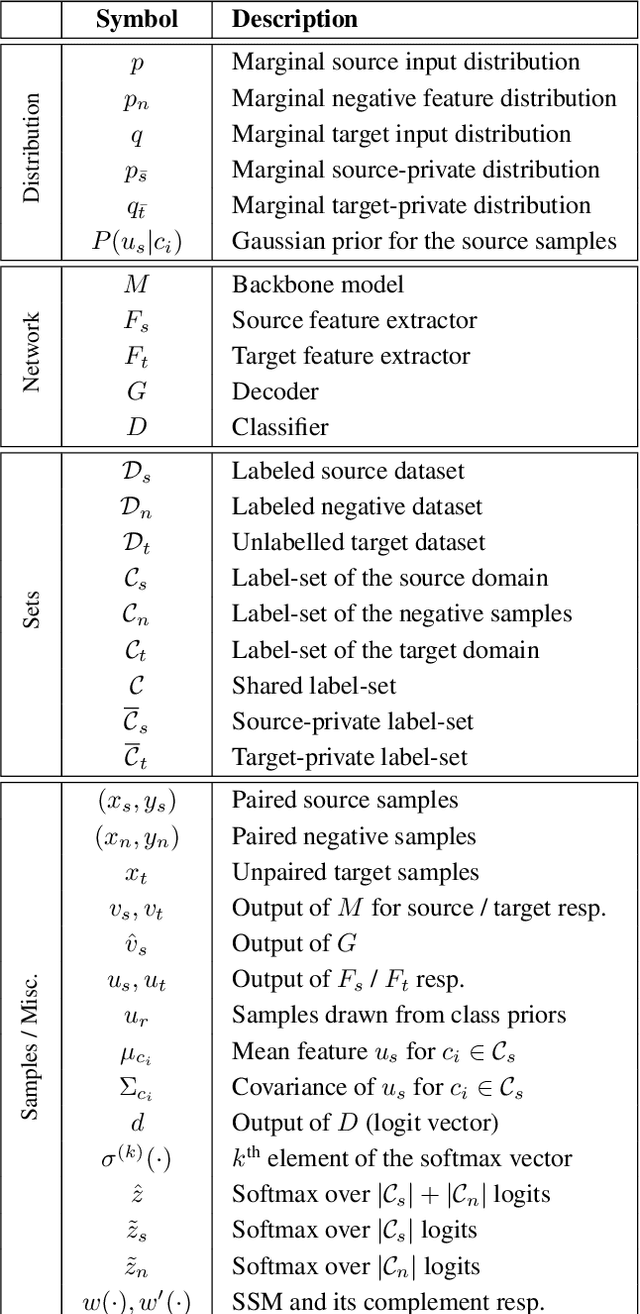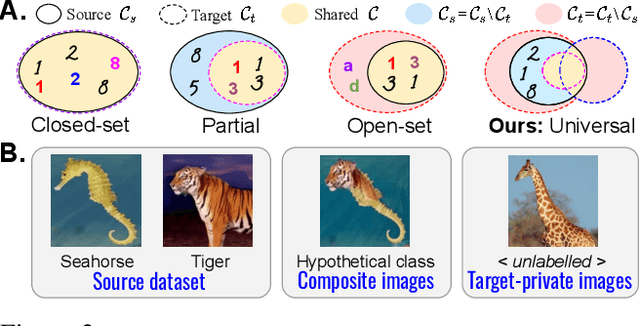Universal Source-Free Domain Adaptation
Paper and Code
Apr 09, 2020



There is a strong incentive to develop versatile learning techniques that can transfer the knowledge of class-separability from a labeled source domain to an unlabeled target domain in the presence of a domain-shift. Existing domain adaptation (DA) approaches are not equipped for practical DA scenarios as a result of their reliance on the knowledge of source-target label-set relationship (e.g. Closed-set, Open-set or Partial DA). Furthermore, almost all prior unsupervised DA works require coexistence of source and target samples even during deployment, making them unsuitable for real-time adaptation. Devoid of such impractical assumptions, we propose a novel two-stage learning process. 1) In the Procurement stage, we aim to equip the model for future source-free deployment, assuming no prior knowledge of the upcoming category-gap and domain-shift. To achieve this, we enhance the model's ability to reject out-of-source distribution samples by leveraging the available source data, in a novel generative classifier framework. 2) In the Deployment stage, the goal is to design a unified adaptation algorithm capable of operating across a wide range of category-gaps, with no access to the previously seen source samples. To this end, in contrast to the usage of complex adversarial training regimes, we define a simple yet effective source-free adaptation objective by utilizing a novel instance-level weighting mechanism, named as Source Similarity Metric (SSM). A thorough evaluation shows the practical usability of the proposed learning framework with superior DA performance even over state-of-the-art source-dependent approaches.
 Add to Chrome
Add to Chrome Add to Firefox
Add to Firefox Add to Edge
Add to Edge